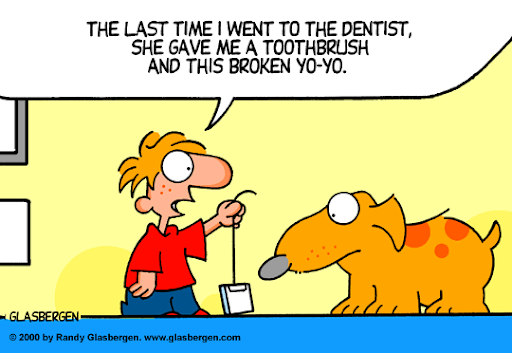Dental Health
Quietly, and without much publicity, enormous strides(=significant progress) have been made in the past decades in the art and science of protecting, preserving, restoring, and replacing teeth. In less than 150 years, dentistry has grown from a primitive to a sophisticated profession.The resulting gains in public health have been enormous. Tooth decay in schoolchildren has dropped 32 percent in the decade of the seventies, and the proportion of children totally free of cavities(=a decayed part of a tooth) has risen almost 10 percent since 1973. Adults have benefited too: The number of denture(=a set of artificial teeth) wearers declined from 35 percent of the adult population to 24 percent in ten years. Much of this healthy progress can be credited to educational campaigns launched by the dental profession, which have heightened national awareness of the importance of healthy teeth. Oral hygiene has become almost as fashionable as jogging, and its enthusiasts would no more be caught without dental floss(=a soft thread for cleaning between the teeth) in the medicine cabinet than a runner would without sneakers in the closet. After the common cold, tooth decay is the most prevalent disease in the United States today. But teeth can last a lifetime if attention is paid to preventive measures, including adequate oral hygiene and regular professional care. By far the best way to prevent decay is to stop it before it starts. The American Dental Association recommends these simple steps:
 A good diet. Choose a balanced diet to build and maintain the gums and bones that support the teeth. Avoid snacking as much as possible, especially sticky foods that cling(=stick firmly) to the teeth.
A good diet. Choose a balanced diet to build and maintain the gums and bones that support the teeth. Avoid snacking as much as possible, especially sticky foods that cling(=stick firmly) to the teeth.
 Brush your teeth. Daily brushing removes plaque(=a sticky deposit on teeth in which bacteria proliferate) and food particles from the teeth. Your dentist can recommend a toothbrush for you. For general use, select one with soft bristles(=synthetic hairs of a toothbrush), which are less likely to injure gum tissues. Children usually need smaller brushes than those designed for adults.
Brush your teeth. Daily brushing removes plaque(=a sticky deposit on teeth in which bacteria proliferate) and food particles from the teeth. Your dentist can recommend a toothbrush for you. For general use, select one with soft bristles(=synthetic hairs of a toothbrush), which are less likely to injure gum tissues. Children usually need smaller brushes than those designed for adults.
 Floss daily. Flossing removes the plaque and food from between the teeth and gums. These areas should be thoroughly cleaned at least once a day, since decay and gum disease often start in places where a toothbrush can't reach. Flossing is a skill that can be perfected with practice.
Floss daily. Flossing removes the plaque and food from between the teeth and gums. These areas should be thoroughly cleaned at least once a day, since decay and gum disease often start in places where a toothbrush can't reach. Flossing is a skill that can be perfected with practice.
 Use a fluoride(=NaF) toothpaste. Fluoride unites with tooth enamel, making it more resistant to decay.
Use a fluoride(=NaF) toothpaste. Fluoride unites with tooth enamel, making it more resistant to decay.
 Regular checkups. Dental visits are a very necessary part of preventive dental care. Disease and problems can be detected and treated early, and home-care practices can be recommended. Visits to the dentist should begin in early childhood and continue throughout adulthood. X-ray examinations are performed when needed but not as a routine matter. X-rays can reveal such things as the extent(=size) of tooth decay, pinpoint(=small) cavities hidden between the teeth or under the gum line, show bone damage from periodontal(=surrounding the teeth) disease, tumors(=abnormal growth of tissue), fractures in the teeth or jawbone, impacted teeth, and abscesses(=a painful swollen area with pus(= thick, yellow liquid)). There may be times when your dentist will refer you to a specialist.
Regular checkups. Dental visits are a very necessary part of preventive dental care. Disease and problems can be detected and treated early, and home-care practices can be recommended. Visits to the dentist should begin in early childhood and continue throughout adulthood. X-ray examinations are performed when needed but not as a routine matter. X-rays can reveal such things as the extent(=size) of tooth decay, pinpoint(=small) cavities hidden between the teeth or under the gum line, show bone damage from periodontal(=surrounding the teeth) disease, tumors(=abnormal growth of tissue), fractures in the teeth or jawbone, impacted teeth, and abscesses(=a painful swollen area with pus(= thick, yellow liquid)). There may be times when your dentist will refer you to a specialist.
